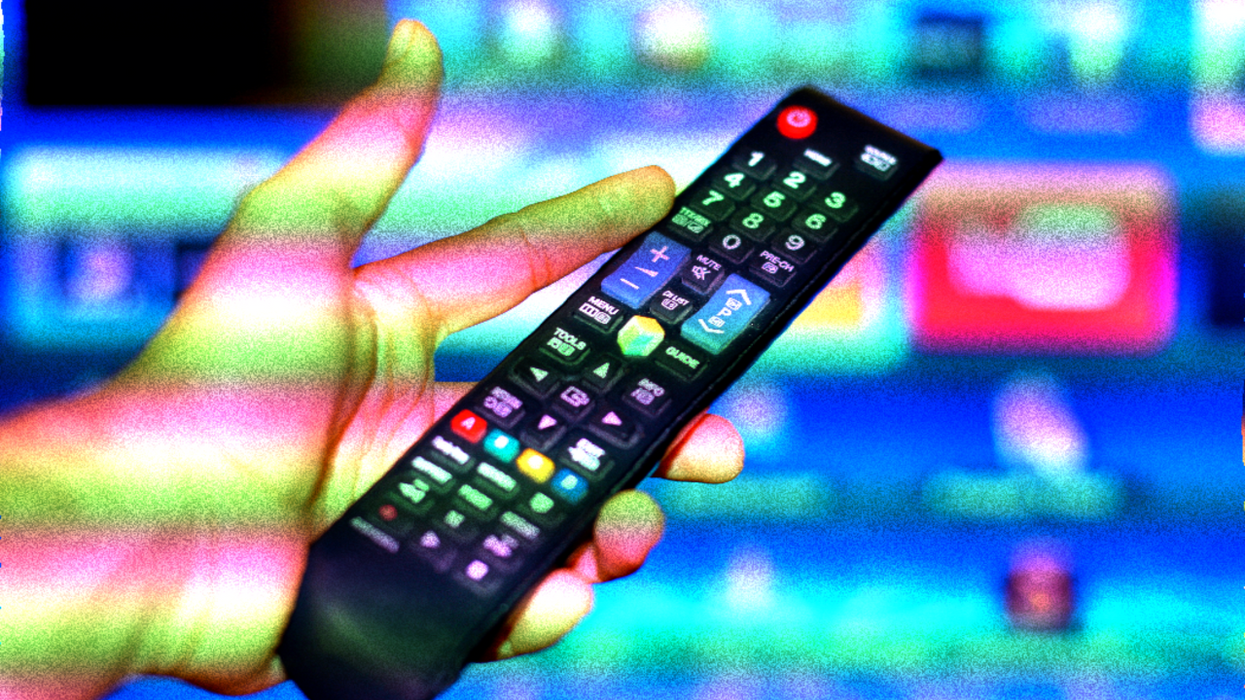This Default Setting on Your TV Is Ruining Movies—How to Fix It
Your TV isn't providing you with a high-quality movie-watching experience, but you can fix it.

Have you ever noticed that something looks off while you’re watching TV or a movie at home? Sometimes the saturation is too high on a movie that you watched in theaters, or the motion looks a little unnatural.
It turns out that this is a common issue that anyone who owns a TV encounters.
Whether you know this or not, your TV is ruining every single movie you watch by distorting the color, contrast, and motion that the filmmakers originally wanted. There are a few ways to fix these problems—and no, it’s not by getting a new TV.
Vox recently sat down with Michael Zink, President of the UHD Alliance, to talk about how you can fix your at-home movie-watching experience and maintain the quality of video that filmmakers like yourself wanted their audience to have.
It’s Not the Movie, It’s Your TV
In the interview, Zink recalls watching TV with his parents and noticing that there was a shadow trailing the characters every time they moved on the screen. The truth is that there is something wrong with the motion on most TVs.
Let me explain.
Every TV manufacturer has proprietary modes they use to market their TVs. Each manufacturer adds new bells and whistles to make their TV the best TV on the market. Unfortunately, these default modes on the TV distort the picture in different ways, and the dreaded motion smoothing is just the beginning.
Having the best TV on the market doesn’t mean you are watching movies the way filmmakers intended. Saturation and contrast are limited, completely altering the color grader's work on the production. You can manually fix the color in your settings, but you’d probably have to alter your settings each time you watched a new movie since every film is color graded differently.
The worst offense is that TVs are adding frames per second to movies.
The Faults of Motion Smoothing
If you have noticed how bad the motion looks on certain films and shows, then you might not be surprised to hear that TVs are operating at 60 frames per second. This is 36 more frames per second that do not exist in a standard movie.
To compensate for those missing frames, the TV uses technology to fill in the gaps.

We are used to movies only showing us the frames they wanted us to see. To make the motion look “smoother,” TVs invent frames, which often create weird, barely perceptible artifacts that our eyes recognize as odd.
Right now, the technology that makes up those extra frames isn’t good enough to accurately smooth the motion of a movie. Instead, motion smoothing takes away from the filmmaker's intent and can confuse the audience.
What’s the Solution?
The UHD Alliance is a group that establishes performance requirements for resolution, high dynamic range, color, and other video and audio attributes in TVs. They set the standards for TV, and among those standards are the movie and filmmaker modes.
This mode can be found in your TV’s settings and will return your TV to a mode where it shows the movies and shows as the filmmakers intended them to be watched. The goal of filmmaker mode is to faithfully represent the filmmaker's work.
As of right now, only LG Electronics, Panasonic, and VIZIO TVs support filmmaker mode. Here is how you do it:
LG
- Go to settings.
- Select "picture menu."
- Click on picture mode settings and picture mode.
- Select on filmmaker mode.
- Go to advanced controls because the recommended levels have changed, and adjust the backlight level.
Vizio
- Go to settings.
- Select picture options.
- Click on picture mode.
- Select filmmaker mode.
- Go to advanced controls because the recommended levels have changed, and adjust the backlight level
Panasonic Viera (Intelligent Frame Creation)
- Press Menu on your remote.
- Select picture settings.
- Click on picture mode.
- Select filmmaker mode.
Do yourself a favor, and change the mode of your TV to movie or filmmaker mode. The filmmaker is better, but it is only available on newer TVs. You will thank us later.
Are there any other TV settings you change to enhance your at-home movie/TV watching experience? Let us know what those are in the comments below!
Source: Vox

 'Aliens'CREDIT: 20th Century Fox
'Aliens'CREDIT: 20th Century Fox
 'Promising Young Woman'CREDIT: FilmNation
'Promising Young Woman'CREDIT: FilmNation









